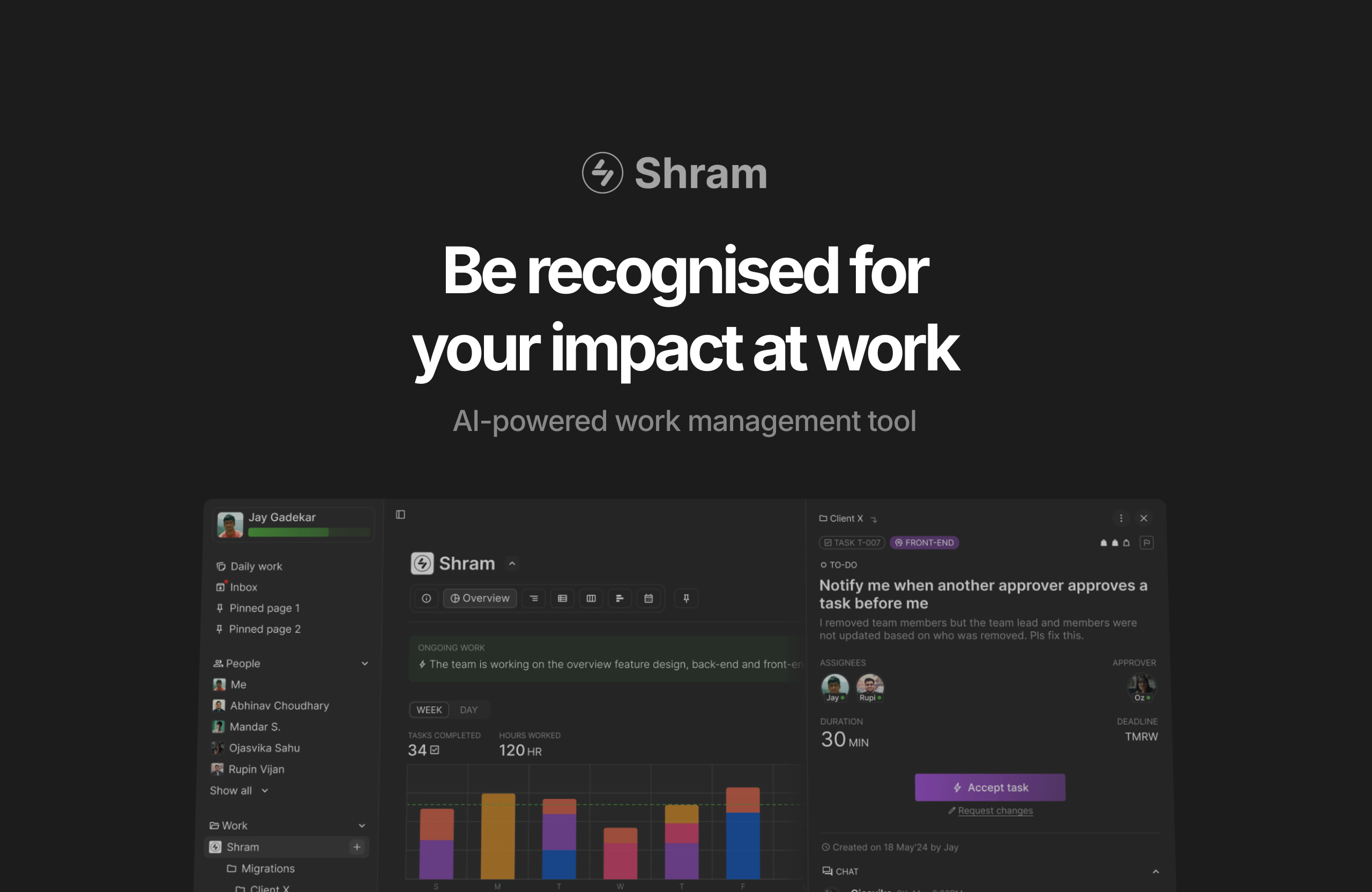
Table of Contents
Overview
In today’s fast-paced work environment, keeping teams motivated and productive can be a real challenge. Enter Shram 2.0, an AI-powered productivity platform designed to inject some joy and recognition into the daily grind. This innovative tool goes beyond simple task management, focusing on celebrating individual contributions and fostering a collaborative spirit through gamified performance tracking and intelligent workload management. Let’s dive into what makes Shram 2.0 a compelling option for boosting team morale and efficiency.
Key Features
Shram 2.0 boasts a range of features designed to streamline workflows and enhance team engagement. Here’s a closer look at what it offers:
- AI-generated work summaries: Automatically generates concise summaries of individual contributions, making it easy to track progress and highlight achievements.
- XP-based progress tracking: Gamified system that awards experience points (XP) for completed tasks, providing a visual representation of progress and motivating users to achieve more.
- Gamified performance metrics: Tracks and displays performance data in a fun and engaging way, fostering healthy competition and encouraging continuous improvement.
- Real-time feedback tools: Facilitates instant communication and constructive feedback between team members, promoting collaboration and knowledge sharing.
- Minimalist UI: Clean and intuitive user interface that minimizes distractions and allows users to focus on their tasks.
- Task matching for balanced workloads: AI-powered system that intelligently assigns tasks based on skills and availability, ensuring a fair distribution of work and preventing burnout.
How It Works
Shram 2.0 simplifies productivity through an intuitive and engaging process. Users begin by organizing their tasks and projects within the platform. The AI then kicks in, diligently tracking individual contributions and generating valuable performance insights. As team members complete tasks, they earn XP, fueling the gamified progress tracking system. Real-time feedback tools are readily available, enabling seamless communication and collaboration. The platform’s intelligent task matching ensures workloads are balanced, preventing overload and promoting a healthy work environment.
Use Cases
Shram 2.0 is versatile and can be applied in various scenarios to improve team dynamics and productivity. Here are some key use cases:
- Workplace motivation: Boost employee morale and engagement through gamified performance tracking and recognition.
- Team productivity tracking: Monitor team progress and identify areas for improvement with AI-generated work summaries and performance metrics.
- Performance reporting: Generate comprehensive reports on individual and team performance, providing valuable insights for management.
- Workload balancing: Distribute tasks fairly and efficiently using AI-powered task matching, preventing burnout and maximizing productivity.
- Employee engagement: Foster a collaborative and supportive work environment through real-time feedback tools and recognition of individual contributions.
Pros & Cons
Like any tool, Shram 2.0 has its strengths and weaknesses. Let’s weigh the advantages and disadvantages.
Advantages
- Boosts team morale: Gamified performance tracking and recognition features can significantly improve employee motivation and engagement.
- Enhances visibility of individual contributions: AI-generated work summaries make it easy to track and celebrate individual achievements.
- Intuitive design: The minimalist UI is easy to navigate and use, reducing the learning curve and promoting adoption.
Disadvantages
- May not suit non-digital teams: The platform is designed for digital workflows and may not be suitable for teams that primarily work offline.
- Gamification could distract some users: Some users may find the gamified elements distracting or demotivating.
How Does It Compare?
When considering productivity platforms, it’s essential to understand how Shram 2.0 stacks up against the competition.
- ClickUp: While ClickUp offers broader project management capabilities, Shram 2.0 places a stronger emphasis on employee recognition and motivation.
- Asana: Asana is primarily task-centric, whereas Shram 2.0 focuses on highlighting individual contributions and fostering a collaborative environment.
Final Thoughts
Shram 2.0 offers a unique approach to productivity by prioritizing team morale and individual recognition. Its AI-powered features, gamified elements, and minimalist design make it a compelling option for organizations looking to boost employee engagement and create a more positive and productive work environment. While it may not be a perfect fit for every team, its focus on celebrating contributions sets it apart from traditional task management tools.

